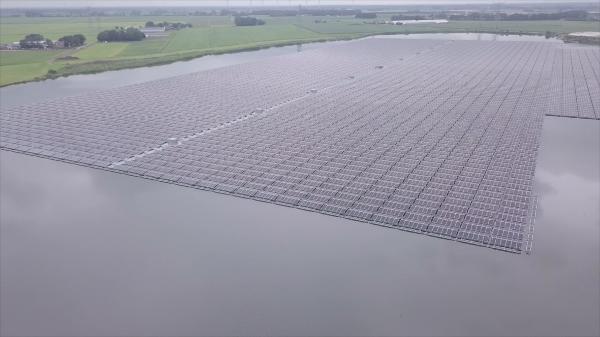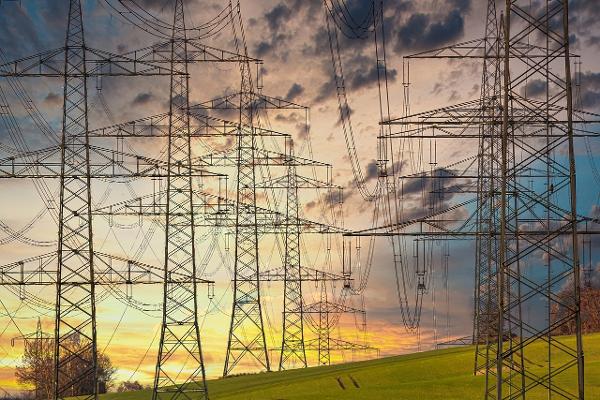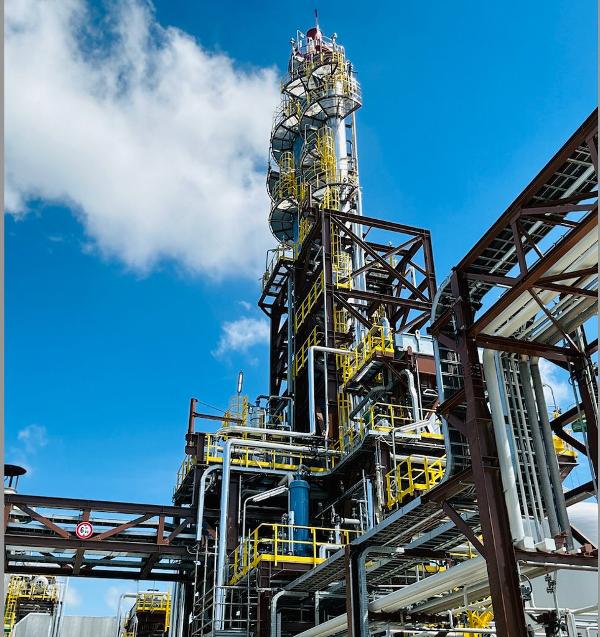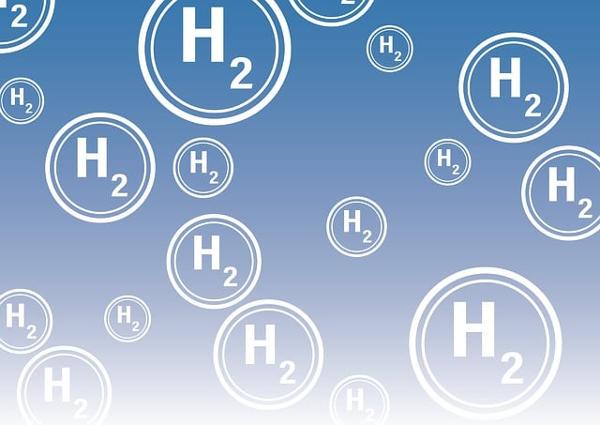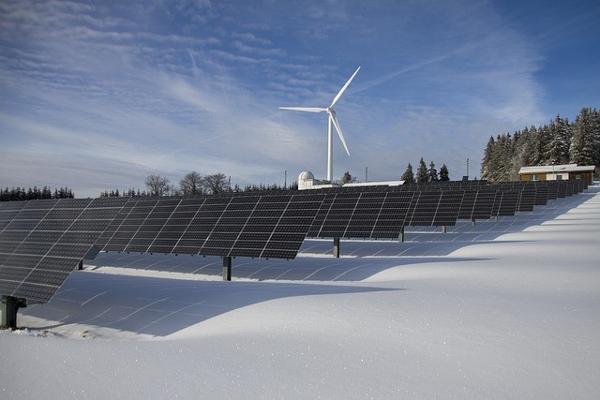The world is facing great challenges to achieve (inter)national climate mitigation objectives in limited time, budget and space. Driven by limited (land) space and increasing demand for energy, large-scale implementation of floating solar panels is currently high on political agendas worldwide and entering our water systems, both inland and offshore. The clear advantages of this type of renewable energy, such as enabling multifunctional use of water space, and increased energy generation efficiency (due to water cooling / temperature regulation), is leading to a fast deployment of renewable energy sources without extensive research to adequately evaluate their impacts on the environment. Such solar parks can cover water surface areas of several tens of hectares and strongly influence water quality and aquatic ecosystems. When the water surface is covered by solar panels it causes extensive changes to light exposure, local hydrodynamics, evaporation, thus affecting natural processes (e.g. photosynthesis) and cycles. It is key to carefully evaluate potential effects and ensure that engineers design solutions that safeguard water quality and ecosystems. It starts with mapping locations of floating solar panels and their characteristics.
The environmental impact resulting from floating structures, either negative or positive, is a complex subject, as it involves physical, chemical and biological interactions between different components of the water system, ecosystems and human activities. Studies that adequately evaluate potential impacts are scarce, and there are no established guidelines for mitigation actions or for the design and construction of floating solar parks. The existing knowledge on the effects of floating solar is frequently based on literature, assumptions and often rely on models without validation with in-situ data and cannot answer all the questions from the water authorities.
Most studies stress the urgency for acquiring long term continuous holistic monitoring from different disciplines such as ecology (focusing on separate fields as birds and fish). There is often no time for thorough research into these effects on ecology and water quality. Moreover, there is a lack of adequate tools (mostly based on the collection of point-samples and laboratory analysis) to conduct comprehensive, efficient, and cost-effective monitoring under the floating solar panels and in their surroundings. Acquisition of field data using innovative monitoring technologies and intelligent data interpretation techniques are therefore urgently needed.
Ongoing research is investigating the effects of floating urbanization on water quality and ecology. These studies are looking into the effects not only underneath floating solar panels, but also for floating houses, or airports. For this purpose, scientists used continuous in-situ measuring sensors, which were installed for several months in the water, as well as aquatic drones designed to measure water quality and collect images of underwater ecosystems. Water quality data collected under/near floating structures is frequently compared with the corresponding parameters at open water locations. In general, reported results show small differences in the measured water quality parameters below the solar panels. Lower dissolved oxygen concentrations and slightly lower temperature were measured underneath the floating structures, with less fluctuations. Underwater images collected by underwater drones show that biofouling layer and filter feeders rapidly develop into lively ecosystems that can emerge shortly after the construction at most locations.
Other research teams are also addressing this topic including ZWIMP, as well as other consortiums with the participation of a variety of private partners and relevant (public) stakeholders. Project GREEN, for example, focuses on improving existing unmanned monitoring methods (underwater, surface and aerial vehicles) in terms of cost-efficiency and features (e.g. autonomous navigation, real-time availability of collected data, intelligent data interpretation), and to develop new systems/methods to monitor aspects that were not possible to monitor so far. SPARKLES (SPARKing a nature-positive future of floating solar for humans and nature across LandscapES) is a new interdisciplinary project that has been granted and will address obstacles that currently stand in the way of a responsible upscaling of solar panels. This forms the basis for an important social breakthrough: after all, space is scarce and requires synergy in energy generation that also yields benefits from ecosystems for people and nature.
These research initiatives are key to provide tools to efficiently monitor water quality/ecology and to discover new insights into what happens underneath the water surface when floating solar panels are installed. With rapid implementation of innovations, there is often no knowledge, time and budget for thorough research into environmental implications. It is equally important to learn how to design/build floating solar parks with a positive impact on the ecology, environment and water quality, and prevent unwanted problems that may lead to disinvestments in this promising green technology.
Floating solar projects offer the opportunity to incorporate green measures in the designs, such as submerged objects or floating gardens that stimulate ecosystem development by promoting nutrient exchange and attracting fauna under floating structures. Additionally, these solutions may contribute to wave damping (protection of floating solar panels) and to the improvement/enrichment of the landscape.
Bomhofsplas floating solar power plant, in Zwolle in the Netherlands
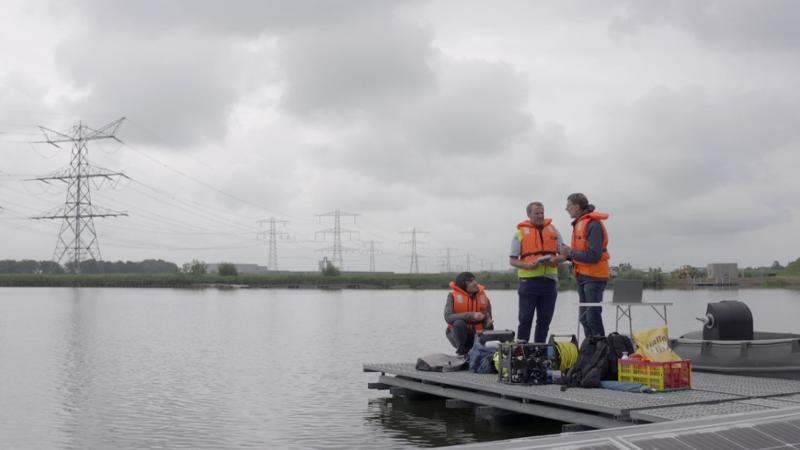
Source: Photo taken by the authors

